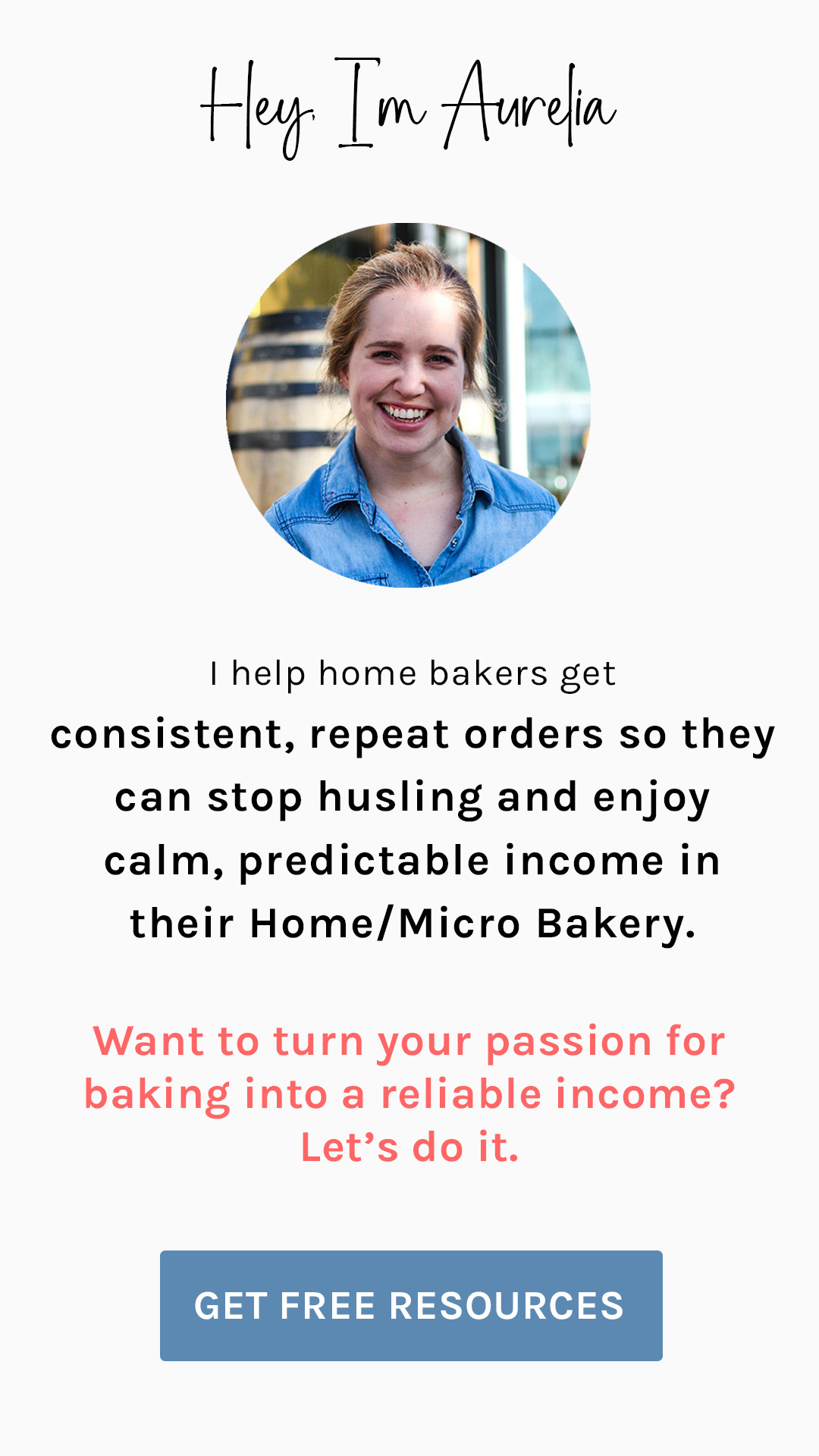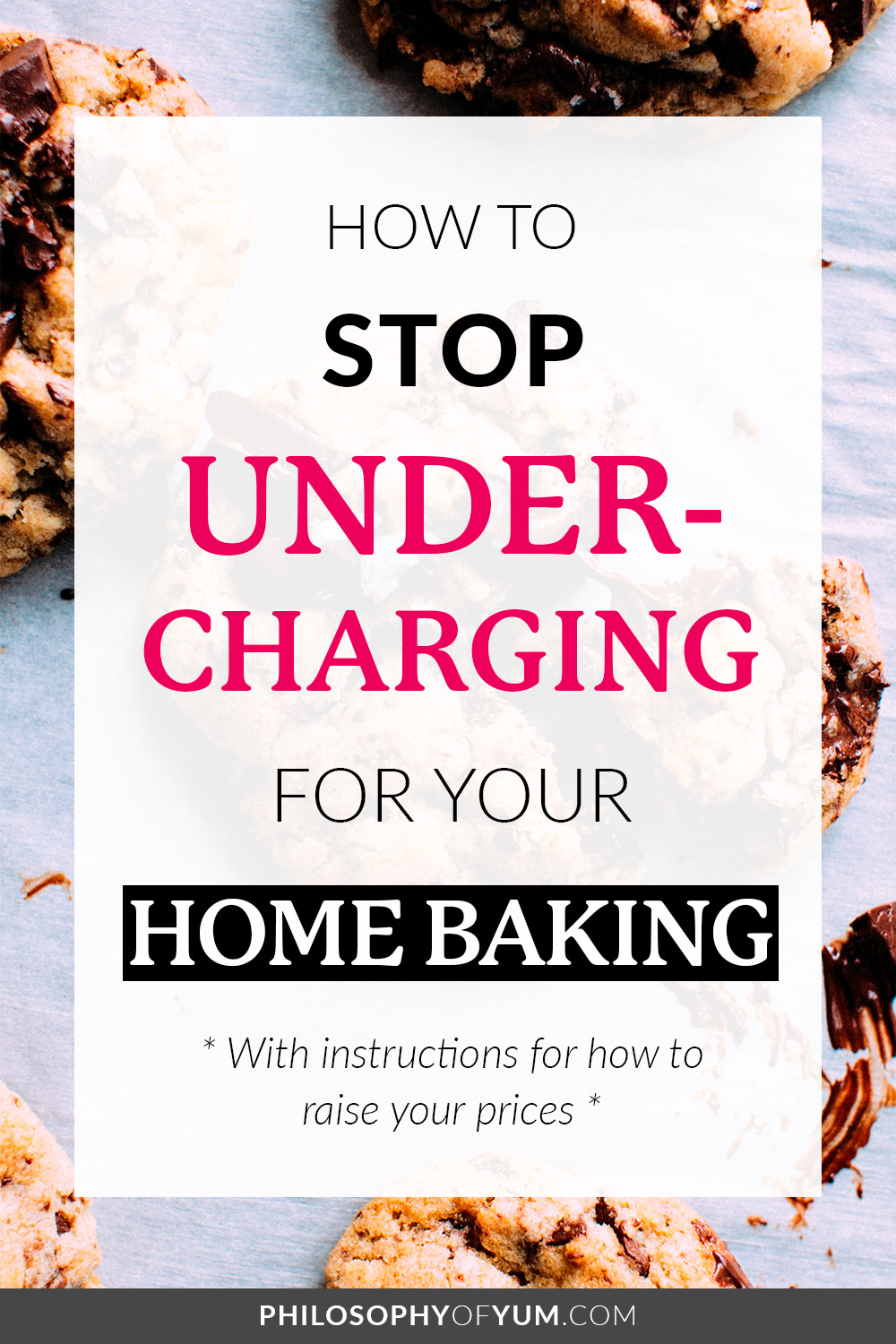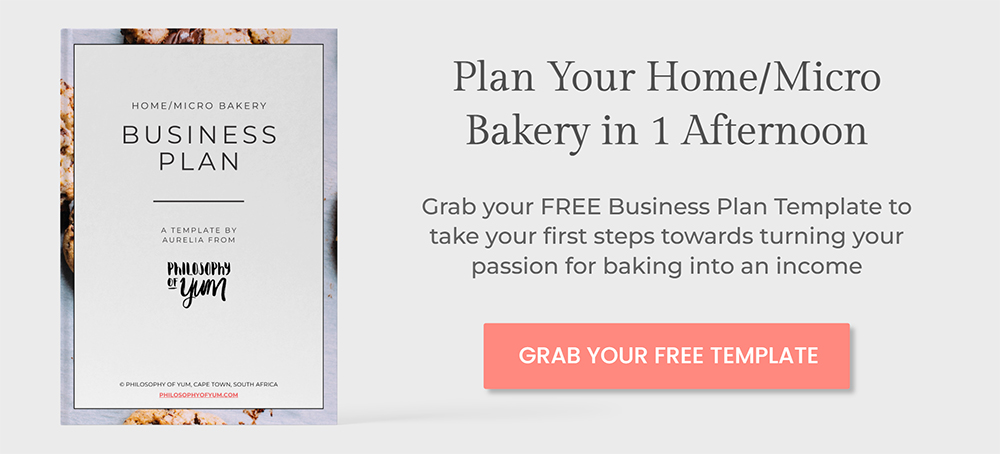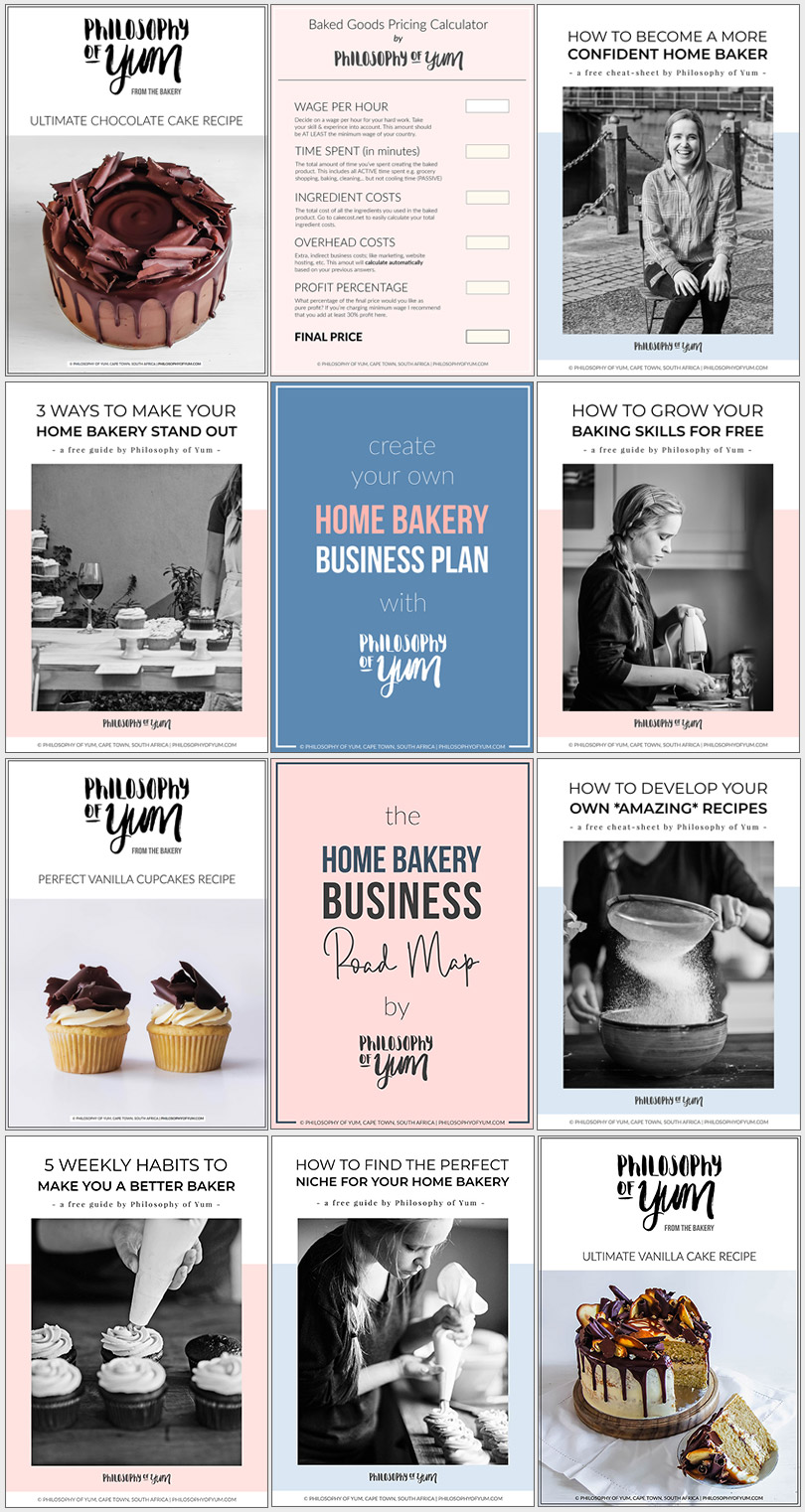How to Make Perfect Baked Cheesecake
Perfect Baked Cheesecake can make any horrible day suddenly seem like the BEST day of your life… It’s powerful stuff!
Unfortunately, there’s an intense and unnecessary hype over how difficult it is to bake a perfect cheesecake. I was absolutely petrified of making baked cheesecake for yeeeeears.
The ingredients are also very expensive, so if the cheesecake flops then you don’t only feel like a failure, but are also broke as well. Too much risk man.
Cooking and baking shows also just LOVE showing us the drama of cheesecake, don’t they?
Drama sells. Do yourself a favour – keep in mind that those contestants are under enormous TIME constraints and pressure to perform. That is an ideal recipe for drama and disaster, which the networks need to make the shows sell.
But I want to encourage you today and put your mind at ease…
It’s actually very simple and 100% possible to bake a perfect cheesecake. ESPECIALLY at home! There is NO reason to be afraid – truly.
So breathe in deeply, muster up some hope and take courage. Now smile! I promise you that I will help you to master this technical dessert and bake the perfect cheesecake on your next attempt.
Before you run off to turn the oven on, just wait a second.
This post (part 1/4) is all about the technical aspects of baking the perfect cheesecake. You may know by now that I am a HUGE believer in METHOD, because it gives us perfect bakes.
Examples of my utter obsession with method: How to Bake Perfect Cupcakes – FULL Troubleshooting, How to Bake Perfect Cupcakes – Advanced Tips, How to Bake Perfectly Level Cake Layers.
I’m laying a foundation here so that you will know exactly what to do when I share my perfect cheesecake recipes in the next 3 posts.
So get yourself a cup of tea and absorb all these tips and tricks I’m sharing with you today.
*HINT* THERE IS ALSO A BONUS CHEAT TIP #7 RIGHT AT THE END OF THE POST THAT WILL MAKE YOUR CHEESECAKE BAKING A WHOLE LOT EASIER!
My 6 TOP Tips for Perfect Baked Cheesecake:
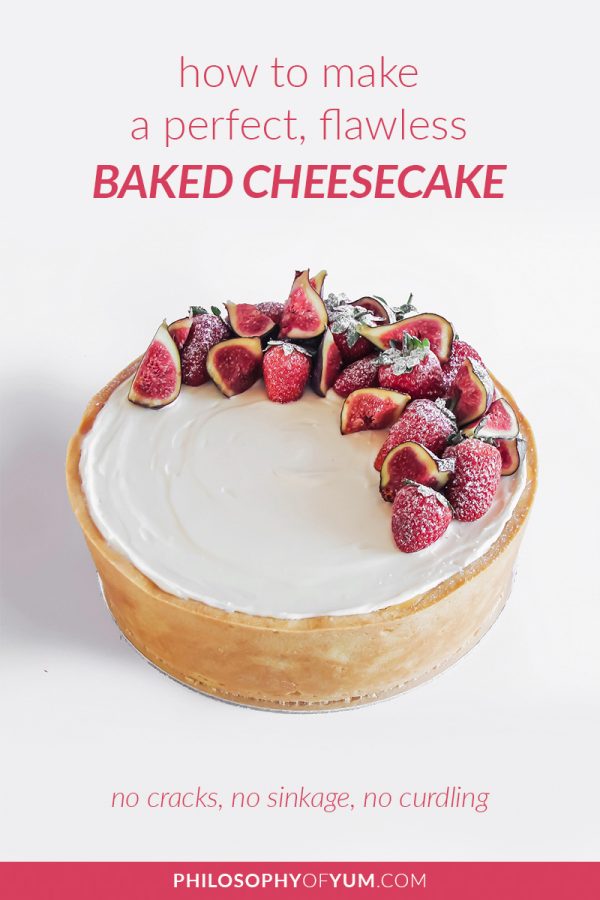
1. Take your Time:
I’ve watched so many seasons of The Great British Bake Off on which the contestants must always bake cheesecake at some point.
My favourite baking show cheesecake episode is however from The Great Australian Bake Off S1-E6. So shocking that they only had 2,5 hours to make it though!
If you rush yourself to make a perfect cheesecake, I can guarantee that a whole lot of things will go wrong!
Cheesecake is like good American BBQ – LOW AND SLOW.
I actually LOVE the fact that cheesecake takes such a long time to bake. My recipe typically bakes for 1 hour, then I turn it and bake it for another 40 minutes.
That gives you two massive brackets of time to do something else while the lazy cheesecake just hangs out in the oven.
It might be a tad irresponsible, but I’ve gone grocery shopping so many times while the cheesecake is baking. Who has time to watch a cheesecake bake? It would probably take less time to watch paint dry.
So to clarify; perfect cheesecake takes a long time to make yes, but 75% of it is PASSIVE time in which you can do something else. Don’t let the long baking time put you off making it.
2. Room Temperature Ingredients:
If your ingredients are not at room temperature, they will struggle to combine into a smooth batter. Perfect cheesecake is made with room temperature ingredients.
Cream cheese can be especially difficult to smooth out when it is cold because of its higher fat content. Butter, for example, is solid fat. Have you ever tried creaming ice-cold butter? Impossible.
Also be sure to use room temperature eggs.
If I am being honest, I always use the cream/sour cream straight from the fridge because I don’t want it to go off while standing at room temperature. But room temperature cream cheese and eggs are essential.
3. The Bain Marie Situation:
Bain Marie means “Marie’s bath”, but in the baking world it just means “water bath”. A water bath is absolutely essential to baking a perfect cheesecake. It ensures a moist cheesecake and helps it to bake gently and evenly.
But the traditional method of bain marie baking is so superlatively tedious…
Wrapping 2 layers of foil around the cake tin AND then placing it in a glass dish AND pouring boiling water around it AND burning yourself when trying to turn the cheesecake halfway through baking it AND then it leaks.
I mean, there are posts just on managing the leaking. TOO TEDIOUS and hazardous. No thanks. Remember, I am a lazy person who loves to make perfect bakes, so I had to find a simpler way.
Ashlee Marie is the fantastic human who presented an alternative. You seriously get the exact same effect if you just place a separate pan of hot water in the oven with the cheesecake. SO much easier and more practical – thank you Ashlee Marie!
- I like to use the biggest roasting tray I have.
- Place it in the lower half of your oven before you bake the cheesecake so that it gets nice and hot during the preheating.
- Boil at least 2 liters of water in a kettle.
- Place your cheesecake in the middle of your oven.
- Pull the empty roasting tray out slightly and fill it up with the just-boiled water. This will create a nice cloud of steam to fill the oven right from the start without burning your arms.
Now that you have this super easy cheat bain marie method for baking perfect cheesecake, don’t let it frighten you off either!
4. How to Avoid the Dreaded Sinking:
Low and Slow applies not only to the baking of the cheesecake, but also the MIXING. Especially if you will be making mini cheesecakes.
Mini cheesecakes will completely expose your mixing method. Tip number 3 is ALL about the mixing.
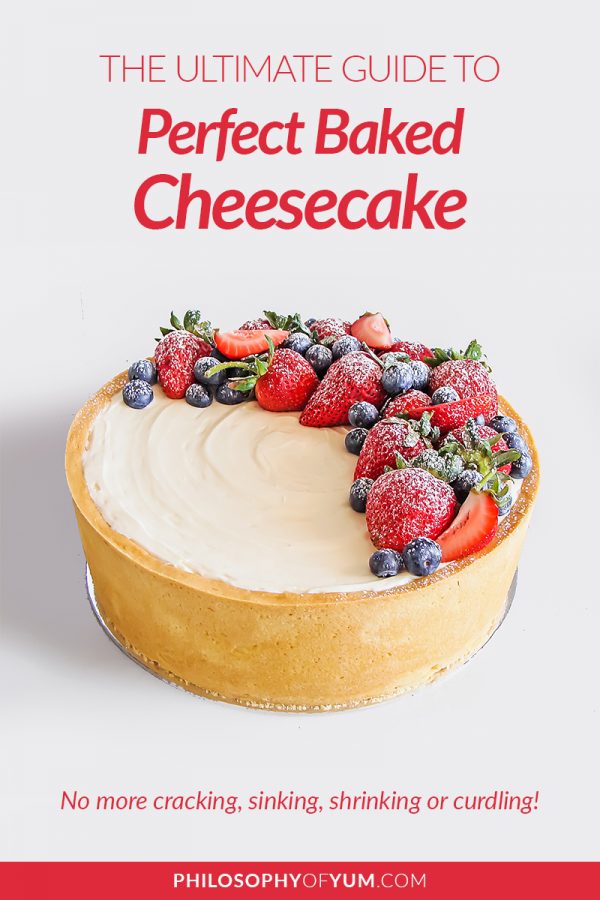
The KEY thing during the mixing phase is not to whip in ANY air. If you do not have a stand mixer with a paddle attachment, make it by hand – seriously. Do not bring a hand mixer anywhere near your cheesecake batter!
- Add the soft, room temperature cream cheese to the mixing bowl. Beat it on medium low speed till smooth.
- Add in the sugar. Beat it on medium low speed for 30 seconds. Let it stand for 5 minutes so that the sugar can melt. Beat it on medium low speed again for 30 seconds till smooth. Don’t rush it and beat it on high speed. Ever. At any point.
- Scrape down the sides and bottom of your bowl thoroughly and mix again on medium low speed.
And now the eggs.
- I like to crack the eggs in a separate bowl and lightly mix them together so that the yolks break and are easier to incorporate into the cream cheese.
- FROM HERE ON OUT ONLY MIX ON YOUR MIXER’S LOWEST SPEED.
- Add the egg in in 4 sessions. Don’t watch it the whole time, you will be SO tempted to increase the speed. It is a great opportunity to spend some time on pinterest or learn a language on the Duo Lingo App (I’ve become 7% more fluent in French, just from cheesecake mixing time! Haha!).
- Before mixing in the last egg, scrape down the sides and bottom of your bowl thoroughly and mix again on lowest speed.
I like to stir in the cream/sour cream by hand because the mixer takes forever to incorporate the liquid.
If you follow the low and slow mixing method, I guarantee that your cheesecake will come out perfect and not sink a bit!
5. How to Tell when a Cheesecake is Done:
A perfect cheesecake has to be just set. Not under baked and saggy, or over-baked and slightly coarse. So HOW do you know when it’s done?
First of all, bake your cheesecake on the regular bake setting of your oven (solid stripe top and solid stripe bottom). Do NOT use a thermo-fan or convection oven.
Now the testing. Some swear by the jiggle or “wibble-wobble” test. Honestly it is a bit vague to me. I can never really tell if it’s done by how much it wobbles. Monique ended up under baking her cheesecake, and so have I, with the jiggle test.
The easiest way for me to tell is looking at the surface. The edges should have puffed up a bit and be dull, but the center circle (about 8cm in diameter) should still be shiny.

The jiggle test is a handy second option for me. The cheesecake should have a stiff jiggle and move as one unit. If the centre still keeps moving after the outer edges have stopped, then it’s NOT done yet. Wait another 10 minutes and check again.
As soon as the outer rim of the cheesecake breaks loose from the side of the tin (or pastry), you’ve gone a bit too far. If the cheesecake browns on top, you have definitely taken it WAY too far.
It will still be tasty, but it will be a tiny bit grainy, drier and not as creamy.
There are also some fancy thermometer tests you can use if you like.
6. How to Avoid the Dreaded Cracking:
A cracked cheesecake can happen as a result of your mixing, but more often than not it is because of your baking and/or cooling. A baked cheesecake is like my husband in winter… If you suddenly pull the duvet off him in the freezing morning hours, he WILL crack.
Cheesecake has a sensitive soul. Respect that and all will be well. For this reason, it needs to be cooled very gently and gradually.
- When baking, let the cheesecake bake in peace for at least one hour before opening the door and turning it or checking it.
- As soon as my cheesecake is perfectly baked, I turn the oven off and leave the door closed for 5 minutes.
- Then I leave the oven door ajar. Let the cheesecake hang out in the (switched off) oven for another 90 minutes to be safe.
- Remove it from the oven and let it rest on the kitchen counter for 1 hour.
- You may now place it in the fridge overnight for the cheesecake to fully set and get a perfect texture.
Cool your cheesecake gradually if you want it to be perfect and crack free. There is no way around this. And besides, it is once again PASSIVE time. You can do other things while it cools!
7. BONUS TIP – Time Saver:
I NEVER remember to take the cream cheese out of the fridge in time. The quickest way to bring it up to room temperature is by defrosting it in the microwave! Yes, I know it’s not “frozen”, but the defrost setting warms up the cream cheese VERY gently and slowly. Yet again – low and slow.
- Don’t use the quick defrost setting though, which is too intense. Auto defrost for meat is perfect.
- I let it run for 2 minutes at a time. The cream cheese usually needs 2 sessions of minutes each to reach room temperature.
- If you can press your finger in to the cream cheese with ease, then it’s ready. Obviously feel the temperature of the cream cheese as well. If you can’t really feel it, it means it should be around body temperature which is perfect.
If your eggs are cold too, simply place them in a bowl of lukewarm water for 10 minutes. Tada!
This is the Part Where I Motivate You:
Put your hands on your heart and repeat after me:
I CAN BAKE A PERFECT CHEESECAKE!
I NOW HAVE NO EXCUSE TO AVOID BAKING CHEESECAKE!
I DESERVE TO BAKE AND EAT A PERFECT CHEESECAKE!

Okay, consider yourself motivated and fearless! These tips for perfect cheesecake will help you to get a perfect bake on your favourite cheesecake recipes.
In the next 3 posts I’ve shared my own Home Bakery’s recipes for perfect baked cheesecake that I make all the time…
- First there’s my Cheesecake Pastry Recipe (includes chocolate variation) and Walk-Through.
- Then my Chocolate Swirl Baked Cheesecake recipe,
- and lastly my Vanilla Baked Cheesecake recipe!
Here are some links to other baked cheesecake posts that I found useful in my years as a professional home baker. Thank you to these authors and bloggers for your research! Ashlee Marie, Prepared Pantry, The Kitchn, All Recipes, The Spruce, Simply Recipes
Now go make that cheesecake!
Chat soon,
Aurelia 🙂

